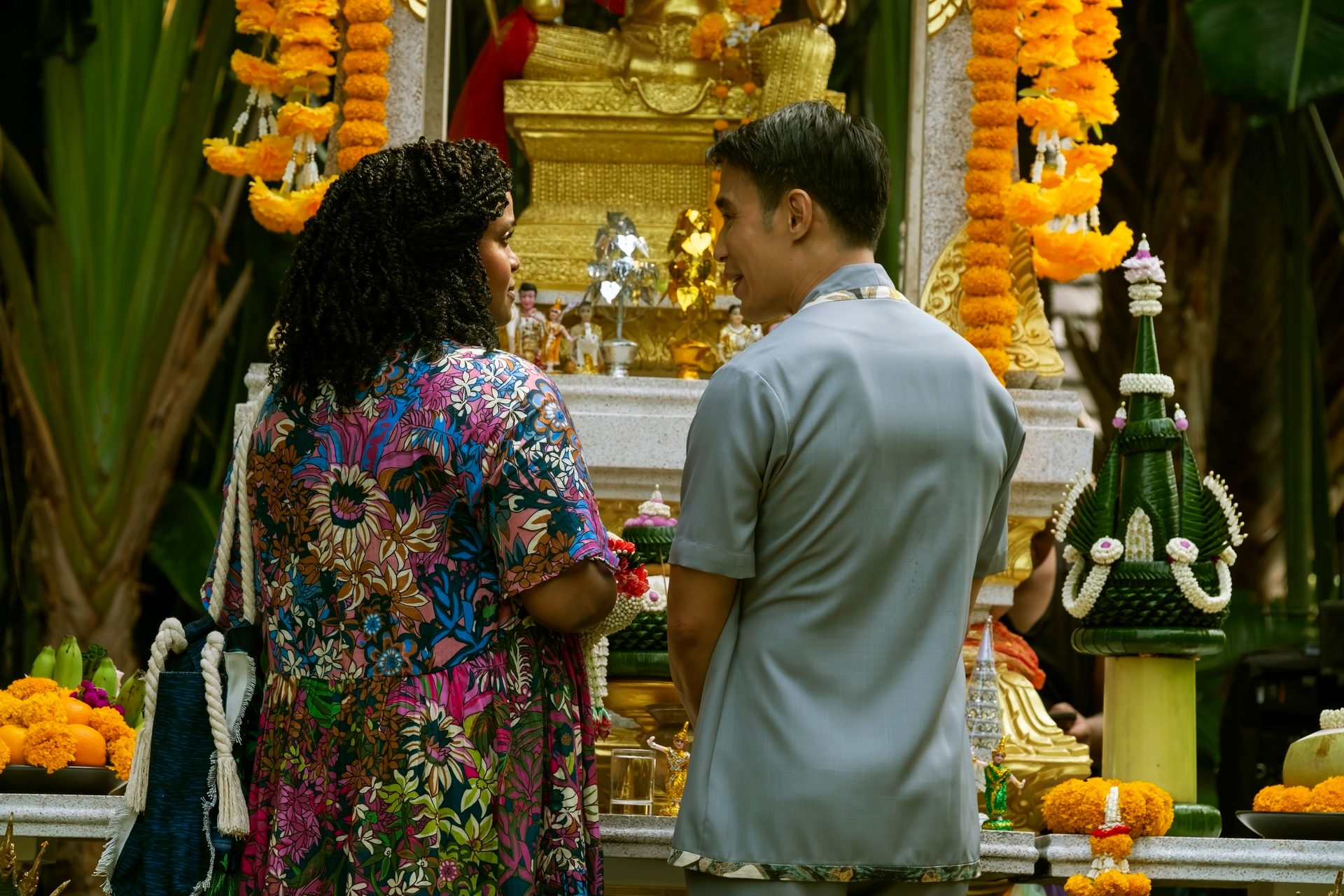

The much-anticipated premiere of The White Lotus Season 3, “Same Spirits, New Forms,” had a high bar set for it after the first two seasons became surprise hits, offering a tense and intriguing premise. Directed and written by Mike White, episode 1 of season 3 transports viewers to Thailand, where a luxurious resort becomes the stage for a fresh round of mystery, tension, and class-conflicted characters. As the season’s opening shot pans over a jungle swamp environment, the tone is immediately set for another emotionally charged exploration of privilege, power, and the perils of wealth.
The episode opens with a striking sequence involving Zion (Nicholas Duvernay), a young man at a meditation session. His mother insists that he take a break and decompress, but as he sits in an idyllic setting, gunshots disrupt the tranquil area, growing louder and closer. Chaos ensues as bullets tear through the resort area. Zion prays at a Buddha shrine for his mother’s safety. Amid the panic, a body floats past Zion in the moat of the hotel—its identity obscured. This unsettling opening acts as a powerful hook, if not a little overplayed at this point, leaving viewers eager to understand what led to this season’s violent outburst.
After this dramatic moment, we flash back one week, accompanied by the upbeat and catchy sounds of Thai music, to meet the next group of vacationers—another set of entitled, wealthy tourists primed for the season’s drama. The Ratliff family, hailing from the American South, takes center stage. Timothy Ratliff (Jason Isaacs) and his wife (Parker Posey) are vacationing with their three children: Saxon (Patrick Schwarzenegger), Lachlan (Sam Nivola), and Piper (Sarah Catherine Hook). Saxon, a frat boy with a knack for trouble, is clearly at odds with his siblings, especially Piper, while the youngest, Lachlan, is caught between them.


Adding another layer to the family dynamics, their health mentor, Pam (Morgana O’Reilly), informs the family that they are required to surrender their devices for a digital detox. Tim protests, explaining that a journalist has been pursuing him regarding a legal matter involving an associate. Despite his objections, Pam insists on enforcing the no-phone policy, setting the stage for tension and potential consequences. The Ratliffs’ ignorance of the digital detox plan and their escalating frustrations suggest that the lack of communication may lead to unforeseen complications. Piper stands out as one of the more grounded characters in the episode. A religious studies major, she appears more attuned to reality compared to some of the other vacationers.
We also meet a group of childhood friends—Jaclyn, Laurie, and Kate—whose fractured relationships add another layer of intrigue. Their interactions reveal the rifts that developed over time, hinting at deeper emotional conflicts. Additionally, we are introduced to Mook and her relationship with Gaitok.
Belinda, the returning character from Season 1, is now burnt out from the events of the previous season. She is not in Thailand for a vacation but instead meets a new acquaintance, Pornchai, who finds her fear of lizards charming (possible romantic interest for Belinda this season?). Belinda’s character helps bring a sense of continuity to the series, reminding viewers of the emotional toll the White Lotus experience has had on its characters.


Despite the compelling character arcs and intricate drama, Season 3’s opening episode feels a bit more predictable than its predecessors. The show’s thematic exploration of class anxiety, which has been a hallmark of The White Lotus, feels somewhat formulaic this time around. The focus on another group of wealthy tourists with troubled lives, paired with the ever-present mystery of a death hanging over the narrative, may leave some viewers longing for more originality. The season’s opening theme, too, seems less engaging, further contributing to the sense that the magic of The White Lotus might be starting to fade.
Another criticism is the overwhelming number of characters introduced, making it difficult to maintain interest in every subplot. While the series’ stacked cast, including the return of Natasha Rothwell’s Belinda, provides a strong foundation, the sheer number of characters and their storylines might leave some viewers feeling disengaged. The show’s reliance on the mystery of a death may also come across as overly familiar.
Nonetheless, The White Lotus continues to explore themes of privilege, power, and human folly, even if the execution feels less inspired this time around.
In conclusion, “Same Spirits, New Forms” succeeds in setting up the season’s mysteries while introducing a new group of complex characters, but it falls short of the sharp, captivating energy that made the earlier two seasons so compelling. Though there’s potential for the story to evolve, the opening episode leaves us questioning whether the series can maintain its intrigue or if it’s simply recycling familiar tropes. Only time will tell.
6/10
